Il rifugio presidia l’accesso all’omonimo altipiano della Gardenacia, che sorge nel cuore delle Dolomiti, al limite orientale del Gruppo del Puez. Altipiano che conserva la sua sostanziale tranquillità, non essendo eccessivamente frequentato, tra i suoi verdi pendii e pareti rocciose.
A mountain panorama is more than a photograph or an image to be immortalised in our minds. Rather, it is an ensemble of feelings, colours and emotions that mingle in the same instant, creating an indelible memory.
A spectacular panoramic spot can give us one of those moments to imprint in our memory, on a day but above all at the right time. On our way to the Gardenacia lodge from La Villa, in Val Badia, we are not yet fully aware of what awaits us.
The lodge guards the access to the homonymous Gardenacia upland, which lies in the heart of the Dolomites, at the eastern edge of the Puez group. An upland that retains its substantial tranquillity, not being excessively popular, among its green slopes and rocky walls.
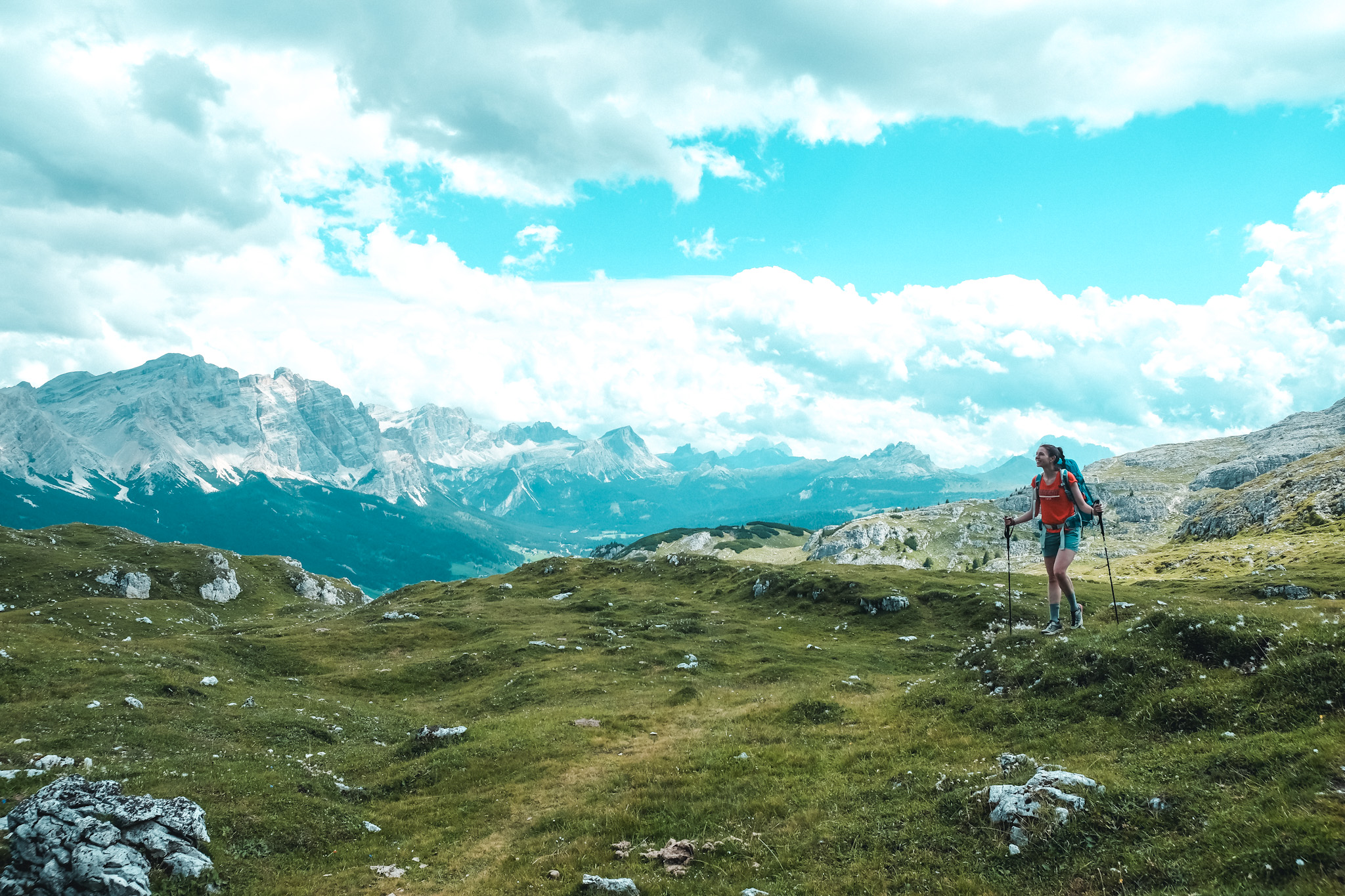
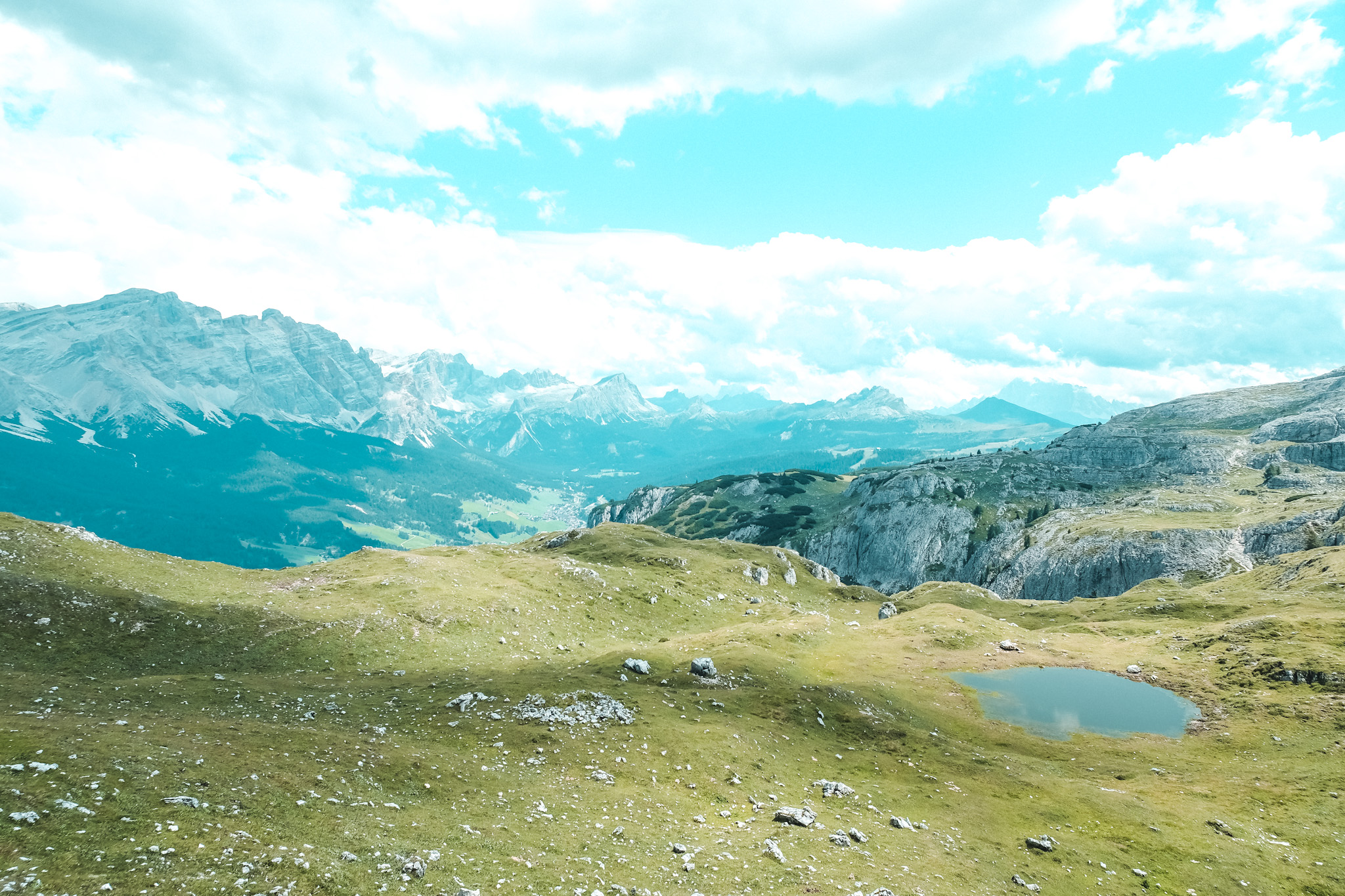
The path that climbs from the centre of the village of La Villa initially leads us along a gentle ascent through the forest, where the rays of the mid-morning summer sun definitely warm the atmosphere. At one point, the ascent swerves considerably, taking us along some sections of the path that wind through steep serpentines in the middle of a rocky gully. Trekking poles are a valuable and necessary aid on stretches like this, where the slope of the path is made up of rock and stones.
This is one of the last offshoots of the Puez Dolomites: a rocky cliff that forms the access to the Gardenacia upland.
The last stretch of the ascent thus reveals the view towards the Gardenacia lodge, which stands in the middle of a grassy expanse where horses and cows graze, on the edge of the Dolomite’s walls looming to the west.
It is from this moment on that the panorama begins to unfold more and more, arousing within us a familiar sensation. The sensation of a view, a peak, a mountain panorama that becomes an indelible experience, thanks to a few precious moments. So, we continue walking despite the hour and the uncertain weather, with the prospect of moving on until late afternoon.
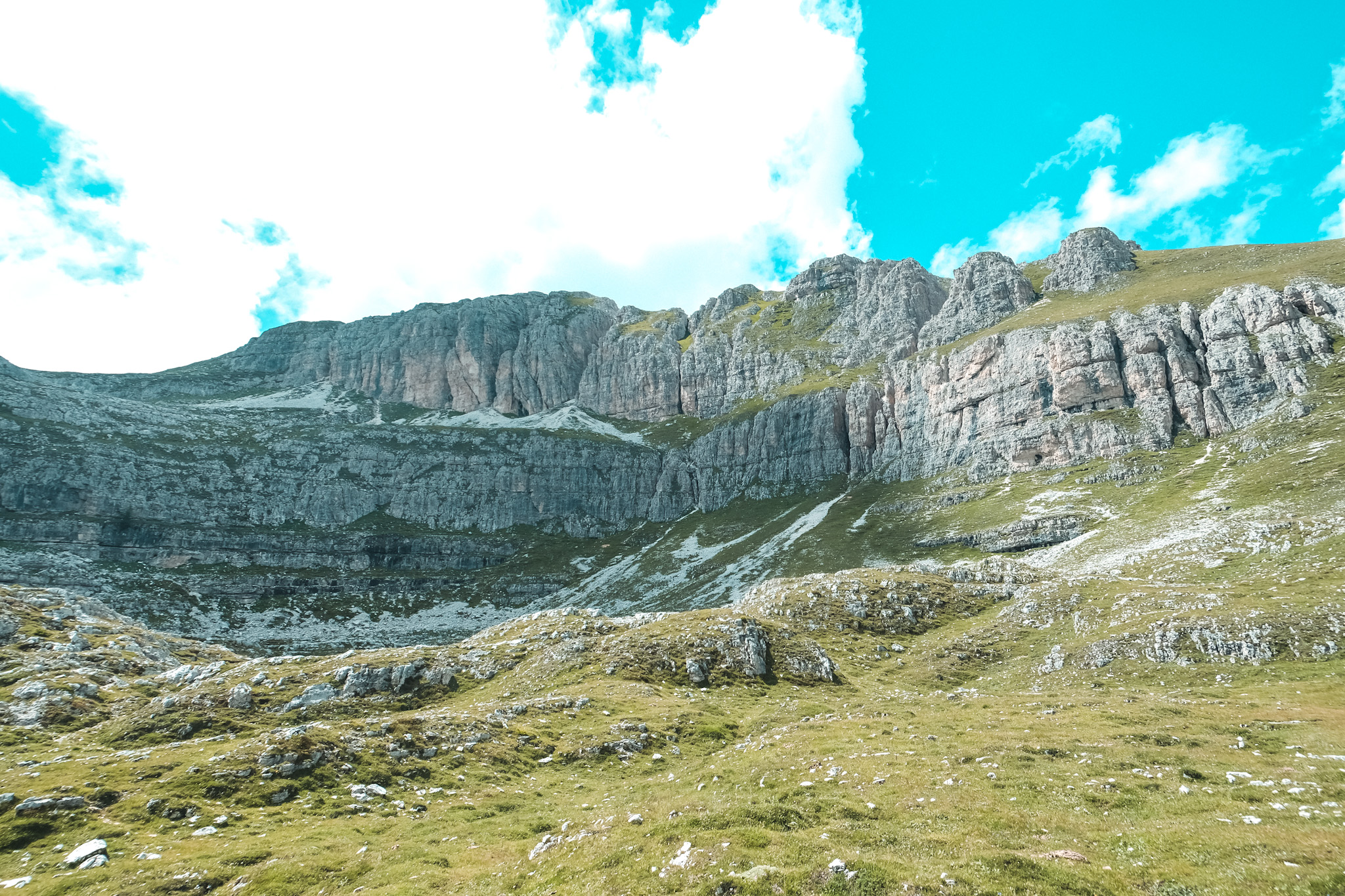
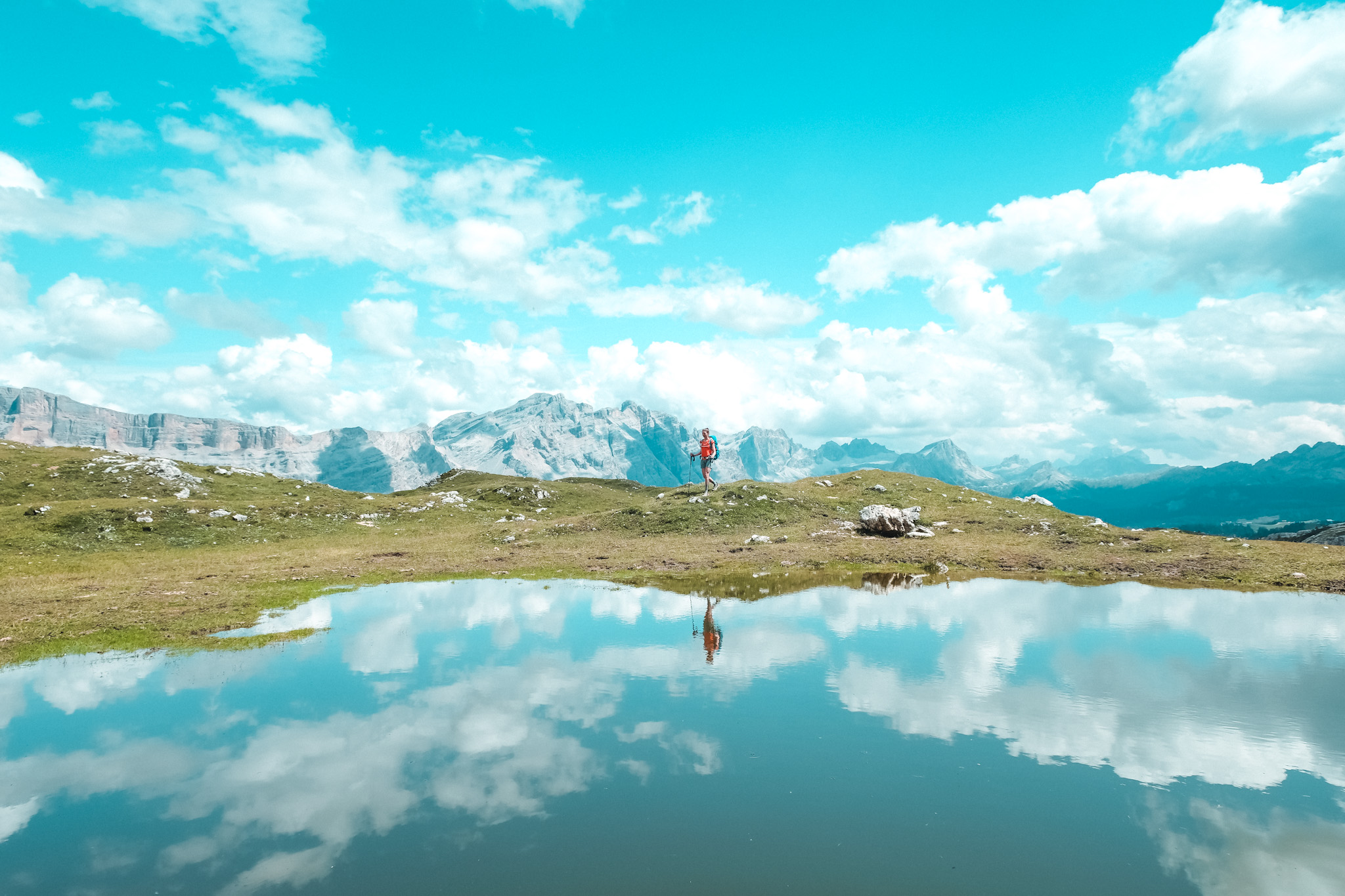
The last areas of the upland reached by the flora give way to a spectacular green grassy expanse, dotted with numerous clear rocks. This is a typical Dolomite’s panorama, with the walls to our left unfolding in spectacular and exciting rocky steps. Some of these go so far as to cross the path, creating some narrower passages in contact with rocky walls, where the hands grip the trekking poles more tightly for the support they provide.
An emotion that develops as we go along this path, where the panorama becomes more and more uncovered, culminating in a long stretch where we are surrounded by the Dolomites. To our right the grandiose walls of pale rock stand out with their jagged peaks above Val Badia. To the left, on the other hand, the Puez group shows us the gateways to its rocky upland, with some wide steps overlooking the green slopes we are crossing, acting as a theatre and stage for this natural spectacle.
The final panoramic spot that completes the hike is the cross of the Col Plö Alt summit: it is certainly not a conspicuous peak, but from its 2,331 metres above sea level it offers an extraordinary view. Col Plö Alt is a small elevation on the grassy upland, recognisable because it is defined by its cros,s that towers above the town of Badia.
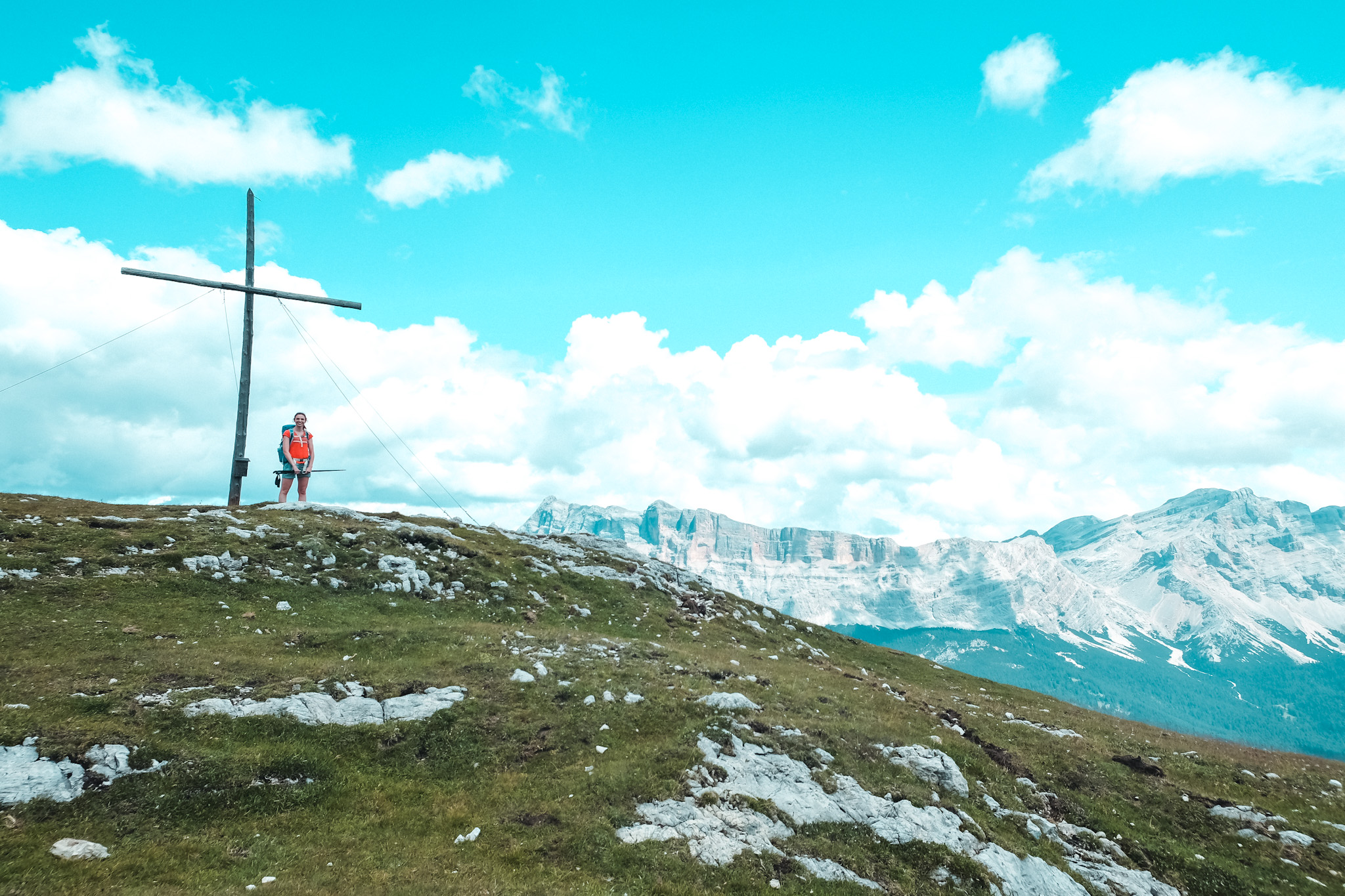
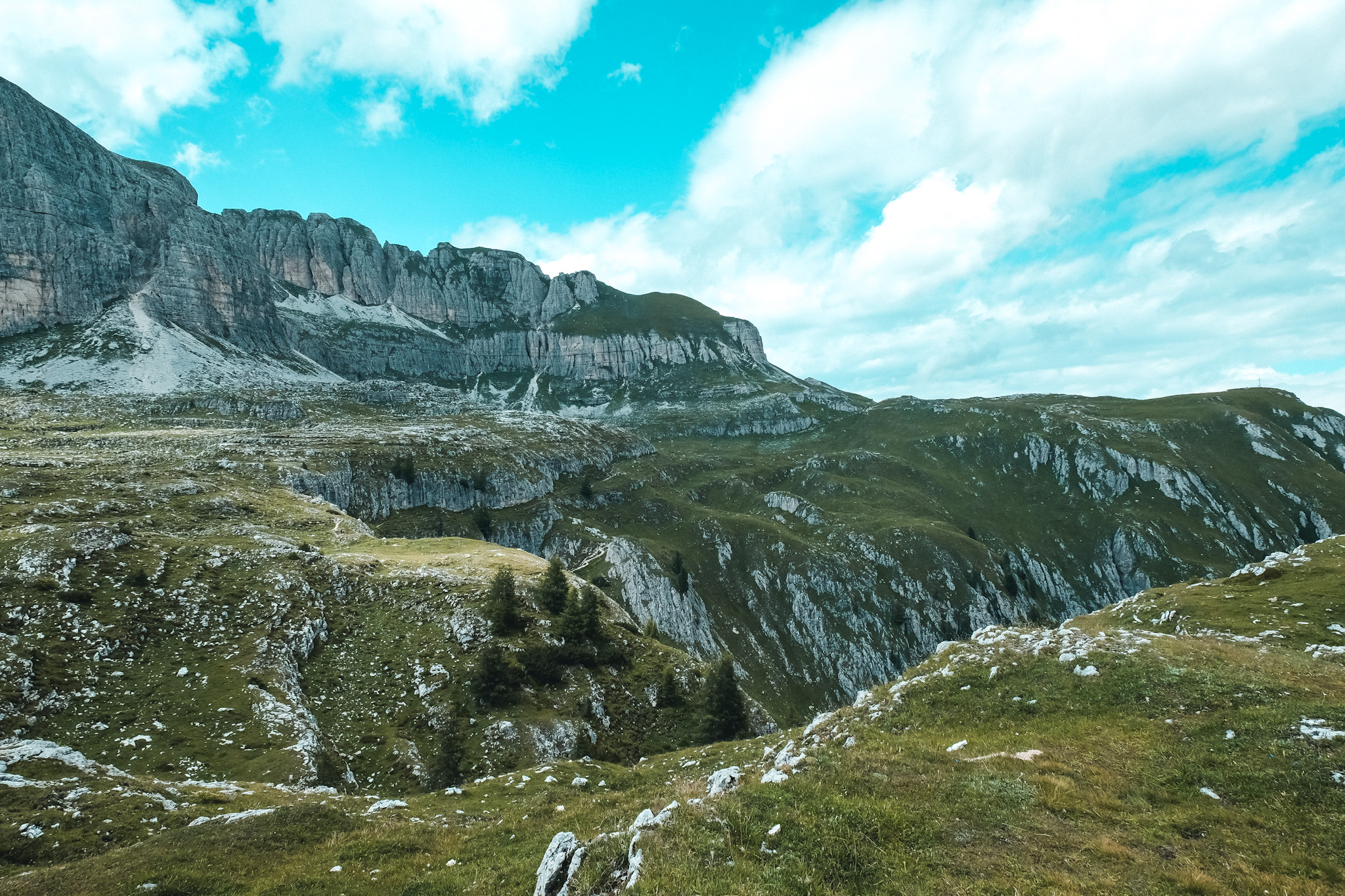
Once we reach the cross, silence overcomes us, and the view enchante us.
From Col Plö Alt, the view sweeps over the Dolomites of the Fanes Group, the Sasso di Santa Croce, Piz Lavarella, Piz Conturines, Croda del Becco, Lagazuoi, and Settsass, and then extends as far as Monte Pelmo.
We stop for several moments that we would like to keep inside us forever, but we then decide to retrace our steps. Nearby we find a small, almost hidden lake, in whose waters are mirrored the outlines and silhouettes of passing clouds, which run swiftly behind and in front of us, giving us one last moment of contemplation, to be captured in memory.
